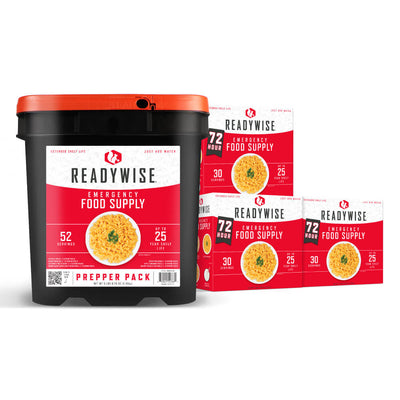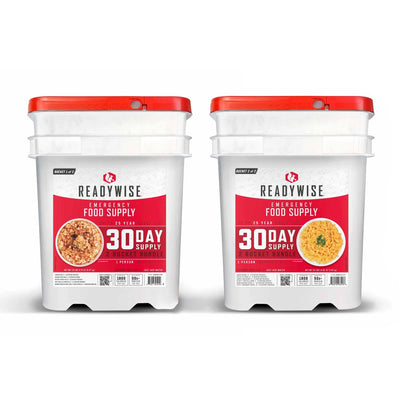Winter may bring chilly temperatures and frosty mornings, but that doesn't mean your gardening efforts have to hibernate. With the right planning and techniques, you can continue to enjoy fresh vegetables during the colder months. In this guide, we'll explore how to set up a successful winter garden and ensure a bountiful harvest. Plus, we'll introduce you to a valuable tool for your winter gardening endeavors – the ReadyWise Wise Food Storage Heirloom Seed Vault.
1. Choose the Right Vegetables
Not all vegetables are created equal when it comes to withstanding winter's chill. Opt for cold-hardy varieties like kale, spinach, carrots, beets, Brussels sprouts, broccoli, cauliflower, radishes, and certain types of lettuce. These robust options can thrive in lower temperatures and are more likely to yield a healthy winter harvest.
2. Select the Right Location
The success of your winter garden depends on your choice of location. South-facing areas receive more sunlight during the winter months, which can provide your plants with the warmth and light they need. Additionally, consider sheltered spots that are protected from strong winds and cold drafts.
3. Use Cold Frames or Greenhouses
To extend the growing season and protect your plants from harsh winter conditions, consider using cold frames or greenhouses. Cold frames are like miniature greenhouses and can serve as ideal spaces for starting seeds or safeguarding young plants from frost.
4. Plant at the Right Time
Timing is everything in winter gardening. Begin planting in late summer or early fall to give your plants ample time to establish themselves before the full force of winter arrives. Consult your local gardening resources for the recommended planting dates in your specific region.
5. Mulch and Insulate
To maintain soil temperature and moisture, apply a layer of mulch around your plants. Materials like straw, leaves, or compost make excellent choices. Proper insulation can help your plants survive the winter with less stress.
6. Water Carefully
During winter, it's crucial to monitor soil moisture carefully. Water your plants when the soil becomes dry, but take care not to overwater, as excessive moisture can lead to root rot in cold temperatures. Watering in the morning allows plants to dry before nighttime, reducing the risk of frost damage.
7. Provide Adequate Light
With shorter daylight hours in winter, supplemental lighting is essential. Consider using grow lights positioned above your plants, providing 12-16 hours of artificial light each day to mimic natural daylight conditions.
8. Harvest Appropriately
Be patient with your winter vegetables; they may take longer to mature in colder temperatures. Harvest when the vegetables reach the appropriate size, ensuring you enjoy the best flavors and nutritional value.
9. Rotate Crops
Crop rotation is a practice that helps prevent soil depletion and minimizes the risk of pests and diseases. Rotate your winter vegetables with other types of plants to maintain soil health.
To make your winter gardening even more fruitful, consider investing in the ReadyWise Wise Food Storage Heirloom Seed Vault. This vault contains a carefully curated selection of 39 varieties of hand-selected non-hybrid, non-GMO, open-pollinated heirloom vegetable seeds. With up to a 10-year shelf life, these seeds are the ultimate tool for your preparedness kit, ensuring you have access to fresh produce year-round.
Remember, the key to successful winter gardening is careful planning and attention to detail. Adapt these tips to your specific location and needs, as climate and conditions can vary from one region to another. Embrace the winter wonderland in your garden and savor the joy of homegrown vegetables throughout the year. Happy gardening!
















































































